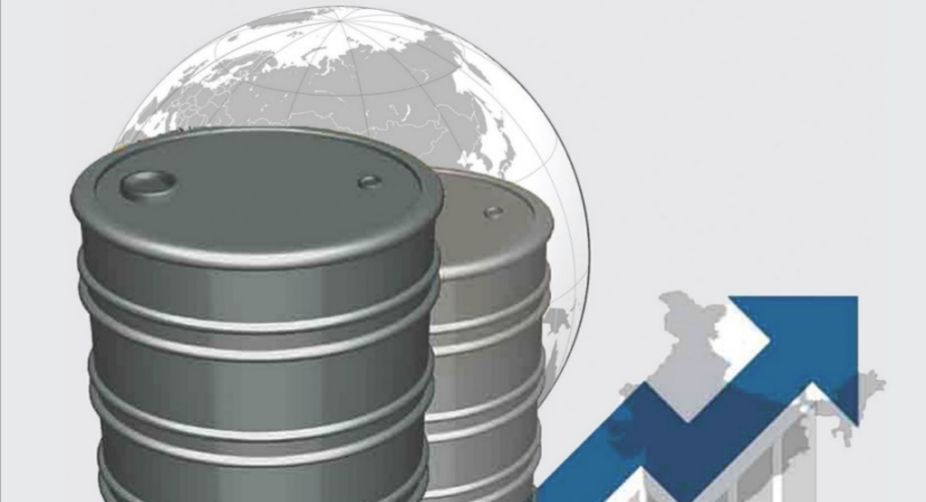Intel appoints Santhosh Viswanathan as India region head
Chip maker Intel on Friday said that it appointed Santhosh Viswanathan to head the India region business as its Managing Director (MD).

Thanks to constantly declining international prices of crude over the past two years, net oil importing countries have benefitted immensely. It is notable that India imports nearly 70 per cent of its oil requirements.
Due to declining crude prices, the oil import bill of India came down from $164 billion in 2012-13 to $83 billion in 2015-16. As a result India’s trade deficit has nosedived to only $118 billion in 2015-16 from $190 billion in 2012-13.
It is clear that this would not have been possible had crude prices not fallen. In the event of high crude prices, the rupee would have depreciated significantly; balance of payment worsened and inflation could have gone out of control. Declining oil prices also benefitted the exchequer.
Advertisement
As crude prices had been falling, government only partially transferred the benefit to consumers and instead raised tax on petroleum products. This led to increase in government’s revenue and it could reduce fiscal deficit and therefore enforce fiscal discipline.
By 2015-16, our fiscal deficit was brought down to 3.9 per cent of GDP. Therefore we can say that declining crude prices helped us in not only reducing our trade deficit but also our fiscal deficit. Prices could also be brought under control and overall performance of the economy improved in terms of GDP growth.
Crude oil prices have once again started rising in international markets; having come down to as low as $30 per barrel, they are now moving around $55 per barrel. This happened after OPEC (Organisation of Petroleum Exporting Countries) countries decided to reduce their daily output by 1.7 million barrels. It is notable that OPEC countries provide nearly 42 per cent of world oil supplies.
In November 2016, nonOPEC oil producing countries also joined hands with OPEC countries and agreed to reduce production of oil. Obviously for the time being oil prices have started taking an upwards trend. So is the low price regime over and will oil prices rise further?
Though it may seem so because production has been reduced, there is a contrary view offered by Energy International Administration (EIA) of USA. According to EIA, crude prices may remain well under $50 per barrel even next year. Though EIA agrees that OPEC countries will honour their commitment to cut production, it would be more or less compensated by increase in production by USA.
According to EIA, US companies are likely to increase production next year and some non-OPEC countries may also increase production. There has been an unprecedented increase in the production activities of US companies and they have registered significant profits as well. Therefore, it is very likely that they will continue to increase production.
News agency ‘Reuters’ also shares the opinion of EIA and its research reveals that this effort of OPEC to prop up oil prices is not likely to be a success as non-OPEC production is likely to increase fast.
However, there is a slight difference between EIA’s and Reuters’ assessment of future oil prices. According to Reuters, oil prices are likely to be between $55 and $57 per barrel, but not more than $60 per barrel; however, according to EIA, they will be around $50 per barrel.
Experts also differ about possibility of reduction in output by OPEC. Though OPEC has decided to reduce production by 1.7 million barrels, it is conditional upon non-OPEC countries reducing their production by 0.6 million barrels. So far only Russia has committed to a reduction in production by 0.3 million barrels.
Some OPEC countries even say that they will reduce their production irrespective of non-OPEC countries falling in line. In view of these fears and expectations, it is generally expected that crude oil prices may remain near the present price of $55 per barrel.
Since 1973 world has seen how OPEC countries had maximised their profits by control of oil prices, thanks to the monopoly power they enjoyed. The situation has changed now, as OPEC accounts for only 42 per cent of oil supply globally, which used to be 52 per cent earlier. Today nonOPEC countries are playing an important role in global oil supplies.
Tension between OPEC major Saudi Arabia and nonOPEC major Russia is a known fact. The USA has been increasing its crude oil production constantly; its total crude production has increased from nearly 5 million barrels in the past to nearly 9 million barrels now. This has played a major role in reducing oil prices internationally.
Although, OPEC countries have decided to prop up prices by contracting production and non OPEC countries have also joined hands with them, there is always a doubt about whether individual countries will actually honour their commitments honestly. Constantly increasing production by USA indicates that it is interested in keeping oil prices low.
There are two reasons behind this thinking of USA. One, USA does not want that Saudi Arabia is left with a big surplus from export of crude oil, as it is accused of financing terror the world over. Secondly, increase in oil prices may shake efforts to take the American economy out of recession.
We must also keep in mind that OPEC countries do not command monopoly power, which they did previously. Although oil exporting countries are passing though huge financial crisis, due to erosion in their monopoly power, they may not be able to push up prices in the near future.
Advertisement